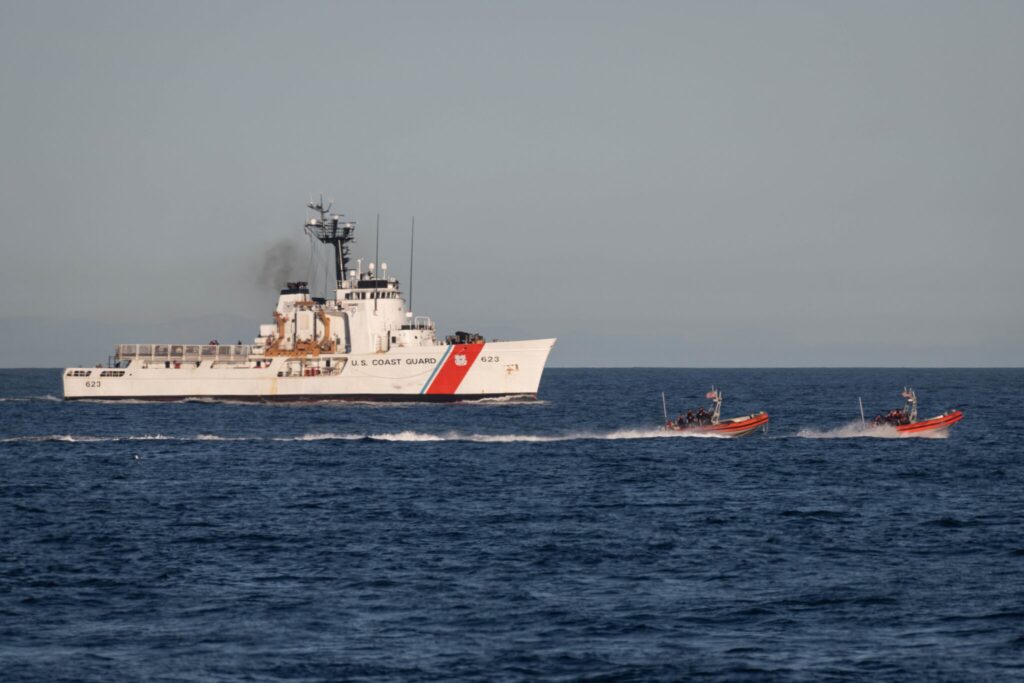
By Richard R. Burgess, Senior Editor
*****
ARINGTON, Va.—The U.S. Coast Guard will lay up several cutters and patrol boats because of a service-wide manning shortage, moves that will reduce the Coast Guard’s capacity for operations in the near term as the service grapples with the shortage of personnel.
The Coast Guard is short of some 3,000 personnel because in large part of shortfalls in recruiting in fiscal 2024.
“The Coast Guard is short nearly 10% of the entire enlisted workforce and cannot continue to operate as we have historically with fewer people,” wrote AJ Pulkkinen in the October 31 announcement posted on the Coast Guard website. “To mitigate the workforce challenge risk in a deliberative and strategic fashion, the Vice Commandant, Adm. Steven Poulin, has provided specific temporary operational guidance to adapt our operations while prioritizing lifesaving missions, national security and protection of the marine transportation system.”
“The Coast Guard cannot maintain the same level of operations with our current shortfall – we cannot do the same with less. Conducting our missions is often inherently dangerous, and doing so without enough crew puts our members and the American public at increased risk,” wrote Commandant Adm. Linda Fagan and Master Chief Petty Officer of the Coast Guard Heath Jones.
“There will be no loss of search and rescue (SAR) capabilities,” the announcement said. “However, we will temporarily adjust operations to prioritize our lifesaving missions, national security, and protection of the Marine transportation System. “
“As cutter crews are not scalable, the only way to reduce the workforce of the cutter fleet is to reduce the number of operating cutters,” the announcement said. “Previously planned cutter decommissionings will continue, including the [Reliance-class] Coast Guard Cutter Steadfast [WMEC 623]. Some cutters will be placed in a special status awaiting either decommissioning or future reactivation. In some cases, the crews will do a hull swap to lay up the cutter with the largest pending maintenance requirement.
The cutters and patrol boats affected include:
- Three 210-foot Reliance-class medium-endurance cutters (WMECs) will be placed in layup, pending decommissioning.
- Seven 87-foot Marine Protector-class patrol boats (WPBs) will be placed in layup, pending reactivation.
- Five 65-foot harbor tugs (WYTLs) will temporarily not be continuously manned but will be kept in a ready status in case icebreaking is needed.
- Two 154-foot Sentinel-class fast response cutters (WPCs) will commence uncrewed Recurring Depot Availability Program (RDAP) at the Coast Guard Yard in Baltimore, Maryland. The next 154-foot WPC scheduled for RDAP will deliver the hull to the Coast Guard Yard and swap hulls with a cutter that has completed drydock.
The cutbacks will affect 44 shore stations and 36 aids-to-navigation teams (ANTs) as well, which have more personnel than the prescribed staffing standards.
“The stations will be reduced to their staffing standards and the ANTs to one billet below their staffing standards,” the announcement said.
Other shoreside changes include, but are not limited to:
- Crews at all 23 seasonal station smalls will transfer to their parent command.
- The six non-response units (boat forces units without SAR responsibilities) will suspend operations and their crews will be reassigned in assignment year (AY) 2024.
- The identified 19 stations whose SAR response capabilities are redundant will be deemed Scheduled Mission Units. Three of these 19 stations will be ports, waterways, and coastal security (PWCS) level one-Scheduled Mission Units.”
“The ‘Trackline to 10,000,’ to have ten thousand members assigned to afloat units, is still the goal for our future fleet and we will get there,” said Capt. John Driscoll, the Chief of the Office of Cutter Forces, in the release. “We need to adjust our operating capacity now so we can prepare for the future. We will gradually grow fleet capacity back through continued construction of ships with the latest technology and the best crew habitability. Our cutter fleet is in demand globally, and I can see our cuttermen continuing to explore new locations as our ship operations are dedicated to the highest priority missions.
“The Coast Guard has always answered the call when faced with incredible challenges,” Driscoll said. “We will take this challenge head-on and use it as an opportunity to prepare for the future.”
- BlueHalo to Test C-UAS System on Marine Corps JLTV - April 29, 2024
- USS George Washington Deploys to U.S. Southern Command, Eventually Headed to Japan - April 26, 2024
- SECNAV Advocates Increased Legal Immigration to Increase Shipbuilder Workforce - April 23, 2024



